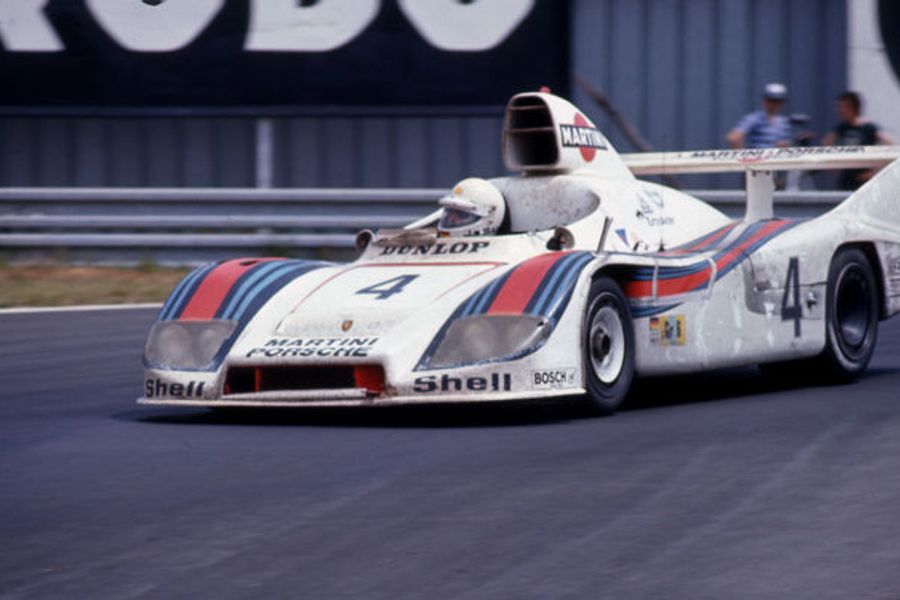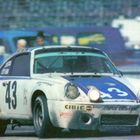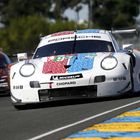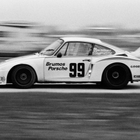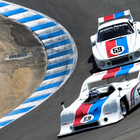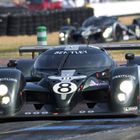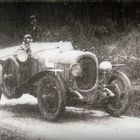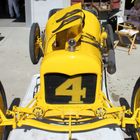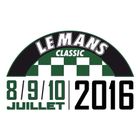Exclusive: The Hurley Haywood Legend Part Two - From Lost in Le Mans to First Win
 By Charles Dressing
By Charles Dressing
Chuck Dessing continues his stroy of Hurley Haywood's 197 season, with the American racer having got the call from Porsche to race at Le Mans for the first time after his Daytona 24 Hours victory (click here for part one)
“I always thought Le Mans was some little provincial town,” said Hurley. He had bungled his travel arrangements thinking any local could tell him where to go. (Privately, Hurley has always harbored the fantasy that he could speak French. He doesn’t, but he does have a pretty good French accent.)
“I got lost within five miles of Charles de Gaulle airport,” said Hurley.
Upon arrival in Le Mans he was without directions and completely clueless about Porsche’s accommodation. Then, a small miracle: Porsche’s Klaus Bischoff wearing his Porsche jacket appeared out of the dark streets of Le Mans. Saved!
“Come,” said Bischoff, “you’re really here! We must celebrate!”
They did, extensively and copiously. The French, renowned for their wine, also happen to be first class brewers. Hurley awoke the next morning in the back seat of his rental car when Porsche’s press chief Manfred Jantke rapped on the window.
He took Hurley to technical inspection and introduced him to his Porsche 936, the number four car he would share with Jurgen Barth.
“It was beeeeeeeau-ti-ful,” said Hurley.
Wednesday practice was wet. On Thursday Jurgen Barth qualified the number four 936 seventh (see video below). Teammates and Le Mans Legends Henri Pescarolo and Jacky Ickx were on the second row in the other Martini 936. Renault ignored the World championship to concentrate on Le Mans – ‘the one race World Championship’. They started first and second and expected to dominate. They were going Formula One racing, this was their year.
Hurley was ordered to start. It began badly: the throttle jammed. Hurley had to limp the number four home with ah and throttle all the way for Tertre Rouge. A new infection pump consumed almost half an hour.
More time was lost when a head gasket was replaced. That was nothing compared to the travails of their teammates. Pescarolo was hustling towards Indianapolis when one of the 936’s titanium connecting rods snapped. By then, Hurley and Barth were in 41st position. Hopeless. Count Rossi, Porsche chief sponsor, flew home.
The race was barely four hours old. Jacky Ickx was reassigned to the Haywood/Barth car and given a simple order: win or break the car trying. Daylight would trickle away in less than three hours. Hurley must have sensed impending déjà vu. To this day, the man who drove the longest and darkest hours of the 1977 Rolex 24 speaks with awe of Jacky Ickx’s 1977 Le Mans drive.
“Everyone on that team tried to live up to Ickx’s performance,” said Hurley. “Everyone.”
Haywood and Barth just drove one shift each that night, allowing Ickx the maximum allowable time in number four. Ickx’s average lap time throughout that night was two seconds off his qualifying pace. And that was seven seconds faster than he had gone in 1976 when won his third Le Mans. Ickx drove eleven hours.
By 10am Sunday the number four 936 was in second place, seven places behind the leading Renault. Ickx was finished and slept for over an hour. Then the leading Renault burnt a piston. Ultimately the entire Renault team would stop with similar problems. Renault called it the ‘Hunaudieres’ Syndrome’.
 Miraculously, Porsche number four was in the lead. Barth drove magnificent double-stint matching Ickx’s lap times. One more stint for Ickx and his day would end. But Porsche’s Manfred Jantke wanted to assign Ickx the final shift – to honor his extraordinary drive by bringing the 936 home victorious. Porsche physician Dr. Gunther Huber nixed Jantke’s noble notion with a few sobering statistics.
Miraculously, Porsche number four was in the lead. Barth drove magnificent double-stint matching Ickx’s lap times. One more stint for Ickx and his day would end. But Porsche’s Manfred Jantke wanted to assign Ickx the final shift – to honor his extraordinary drive by bringing the 936 home victorious. Porsche physician Dr. Gunther Huber nixed Jantke’s noble notion with a few sobering statistics.
The final shift would go to Barth. Lap times slowed by as much as 15 seconds. Then, just after 1pm, the 936’s engine burnt a cylinder.
“I felt this tightening up of the engine. I looked in the mirror and there’s all this smoke,” said Haywood. His face hardens, even now, 40 years later. “I’m getting this sucker back to the pits!”
He put the Martini 936 in third gear and carried on. “They swarmed the car’” he said.
The crew disabled the crippled cylinder and waited. Barth got in.
“They taped a big clock to the steering wheel,” said Haywood. At 3.50pm with ten minutes to the checkered flag, Barth was sent off on the final mission of one of the most extraordinary Le Mans in history.
“Jurgen just missed it (the 4pm finish) and had to do two laps,” said Haywood, still agonizing 40 years later.
Barth crossed the line at 4.03pm. It was Haywood’s and Barth’s first Le Mans win, Ickx’s fourth – three in a row! – the 936’s second and Porsche’s fourth.
Haywood became the first racer to win the two biggest endurance races in the same year. Both in Porsches’ naturally. Hurley’s Daytona ‘midnight-ride’ had gone all but unnoticed, unlike Ickx’s Le Mans heroics.
Ickx, Barth and Haywood celebrated. Porsche would win Le Mans many times more. Ickx would win twice more. So would Hurley (all in Porsches), though he made a tactical blunder on the podium of his third and final Le Mans victory in 1994 when he hoisted his third victory bouquet aloft.
“I was wearing a cheap plastic watch on the podium,” said Hurley, a long-time Rolex spokesman. He was duly punished…
“Roland (America’s Rolex boss) had a special Rolex with a rubber strap made for me and I have worn that watch in the cockpit ever since,” said Hurley.
As the new century dawned, Le Mans and Daytona grew apart. GT cars won the Daytona 24 Hours in 2000 and 2001. On the 30th anniversary of Hurley’s first Rolex 24 victory the Daytona 24 Hours was won by a Porsche 996 GT3RS, a pure blood descendant of Hurley’s 1973 winning RS, as a new sports car formula and sanctioning body – the Daytona Prototypes of the Grand American Road Racing Assn. – debuted quietly at Daytona.
The first overall victory for a Daytona Prototype came a few months later at Miami and it was Hurley who logged that win as well; naturally in a Porsche -powered Daytona Prototype wearing Brumos’ traditional and famous white-red-and-blue livery.
On the first of April 2016 an era ended when Brumos Porsche was sold. Hurley still keeps an office at Porsche of Jacksonville at 10100 Atlantic Blvd. The new owners seem to enjoy having a genuine Porsche legend on staff who still has that special touch with every 911 that he drives. Even though, on rare occasions, he wears glasses for close work.
Popular Articles
-
 January 2025 Podcast -Indy Collection, Daytona and Baghettii's Debut F1 Win!9 Jan 2025 / Podcast
January 2025 Podcast -Indy Collection, Daytona and Baghettii's Debut F1 Win!9 Jan 2025 / Podcast -
 December Podcast: Derek Warwick Part Two...F1, Le Mans and More!9 Dec 2024 / Podcast
December Podcast: Derek Warwick Part Two...F1, Le Mans and More!9 Dec 2024 / Podcast -
 November Podcast: Warwick, Whitaker, Evans and the usual Wittering16 Nov 2024 / Podcast
November Podcast: Warwick, Whitaker, Evans and the usual Wittering16 Nov 2024 / Podcast -
 October Podcast: Featuring Sir Jackie Stewart!10 Oct 2024 / Podcast
October Podcast: Featuring Sir Jackie Stewart!10 Oct 2024 / Podcast



